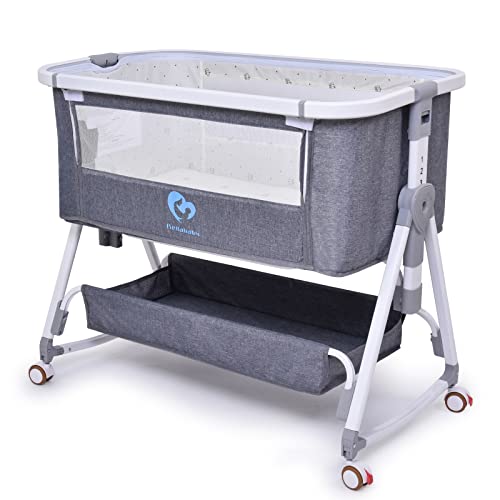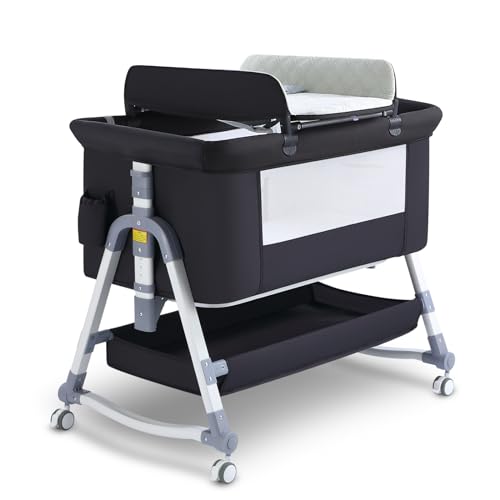The 10 Scariest Things About Cot Sales
페이지 정보

본문
 cot sale, www.metooo.es, Sales and Ambulance Services
cot sale, www.metooo.es, Sales and Ambulance ServicesCot sales are increasing due to the higher rates of birth and increased awareness of baby safety. Numerous companies are also introducing cots which can be converted to day beds.
A consistent and rigorous methodology for assigning COT designations is critical to ensure accuracy in government pricing computations. A documented SOP and an audit process that is thorough are also important.
Demand for ambulances is increasing
Globally, the market for ambulances is booming, as traumatic injuries and chronic illnesses are becoming more common. These ailments are usually caused by medical emergencies that require prompt and timely interventions to save lives. This increased demand emphasizes the importance of effective emergency response systems and accessible healthcare facilities to ensure the health of the population.
Ambulances transport patients to hospitals and health facilities, and provide out-of hospital care while in transit. The demand for these vehicles is driven by factors like the increasing number of road accidents, an increase in the number of people who are elderly and favorable reimbursement policies. In addition, the demand for air ambulances is also boosting due to an increased demand for fast and reliable medical transportation across long distances.
 The global ambulance market can be divided into three categories: hospital-based services, independent service providers, and government-run services. Hospital-based ambulance services are run predominantly by healthcare facilities as well as private companies. The independent segment, which comprises privately-owned and operated air ambulances is projected to expand quickly in the forecast time. The government-operated segment on the other hand, comprises ambulances operated by state or municipal governments or military units.
The global ambulance market can be divided into three categories: hospital-based services, independent service providers, and government-run services. Hospital-based ambulance services are run predominantly by healthcare facilities as well as private companies. The independent segment, which comprises privately-owned and operated air ambulances is projected to expand quickly in the forecast time. The government-operated segment on the other hand, comprises ambulances operated by state or municipal governments or military units.Based on the type of fuel used the global ambulance services market is classified into diesel, gasoline, and electric. In the forecast timeframe, the diesel segment is anticipated to bring in the highest revenue share. The high performance and reliability of diesel-powered ambulances is preferred by fleet managers. The fuel efficiency of diesel engines is constantly improving with the advancement of technology. However, the growth of the diesel sector is hindered by strict emission regulations.
The demand for ambulances is also caused by the rise of new medical technology. Telemedicine technology allows ambulances to communicate with doctors and receive treatment guidelines in real-time. These tools help improve patient outcomes and reduce emergency department (ED) admissions and.
North America dominates the global ambulance services market followed by Europe and Asia Pacific. The North American market is fueled by the high demand for top-quality healthcare services, well-established healthcare infrastructure and favourable reimbursement policies. Furthermore, the strategic efforts of market players and the growing geriatric population in the region are also boosting the potential of growth in the market.
More expenditures in the healthcare sector
The healthcare industry accounts for a significant share of national economic activity. In addition, it aids in the development of human capital as well as improving labor productivity. It is important to increase expenditures in this area to improve economic performance. However, it's not always straightforward to determine how health care spending impacts the economy of a country. There are a variety of factors that influence the growth of a country's economy and health spending, and these factors may differ across different industries and regions of the country.
In the US, the primary sources of funding for healthcare are private businesses, households and the government. Private expenses for household and business are funded by health insurance premiums paid to private individuals and out-of-pocket spending. Government program spending is also paid for (either through dedicated taxes or general revenues). The government program spending is an important factor that influences health spending trends. In the course of the COVID-19 pandemic government spending on non-hospital, long-term care services increased dramatically. More than one third (33%) of all health expenditures in the United States are accounted for by government programs.
Health care expenditures are usually measured using the Gross Domestic Product (GDP). GDP is a measure of a country's total output. In the case of health care, it is the production of goods and services. A growing economy is associated with a higher GDP and more jobs. This is why it's important to understand the impact of healthcare expenditures on GDP and other economic indicators.
It is essential to consider the impact of healthcare expenditures on economic performance when designing public policies and evaluating new healthcare initiatives. Numerous studies have demonstrated that increased investment in healthcare enhances the productivity of human capital and stimulates economic performance (1 2, 3). However, these effects are complex, and they may vary according to the industry and population groups affected by the expenditure.
In order to ensure that the government pricing values are accurate and consistent, it is critical to have a documented method for assigning COTs. Inconsistency can result in inaccurate data, which may result in unfavorable Medicaid Rebates, NFAMP or 340B/PHS Ceiling Price. Incorrect COT designations could result in chargebacks, contract restrictions and other financial penalties. To avoid these risks, it is recommended to create a COT assignment methodology based on manufacturer SOPs and an cot sets reference library.
Demand for convertible cribs for babies
As baby products get more sophisticated, parents are willing to invest heavily in their babies. This has led to an increase in the demand for cribs that can be transformed into daybeds for toddlers or toddlers. These conversion kits are an excellent way to extend the lifespan of a crib and save money over the course of. They also help parents avoid having to rush at the last minute to find the perfect bed for their child. The demand for cribs of this kind is expected to increase over the forecast period.
The market for cribs and cots is growing rapidly due to the rising birth rates and standards of living in the world. The market includes a wide selection of essential baby products, such as strollers and monitors. The rise in nuclear families and working individuals is driving the need for high-end, secure, and multifunctional baby furniture. Top brands like DaVinci Baby offer multifunctional cribs that can be converted into a toddler bed or larger beds. This allows parents to maximize their investment.
These cribs are usually made of durable metal or wood which makes them a great choice for babies and young children. They are simple to clean and are an ideal choice for busy families. They also come with safety features, such as side guard rails with built-in side rails and a secure mattress latch. Some even feature adjustable mattress heights that can be adjusted for different age groups.
Specialty stores and distribution channels online sell baby cribs and cots. They are also available in a wide variety of styles and styles, from contemporary to traditional. Some include features such as sensorSafe technology and airbag systems to enhance security and safety. The use of environmentally friendly materials in the manufacturing process has also risen.
Since infants spend an average of two and a quarter years in their cots, they play a significant role of their development. This has prompted manufacturers to design new products that combine style as well as comfort and function. Cradlewise, for example, offers a smart crib that makes use of artificial intelligence to adjust to the sleeping patterns of a baby. It also features an infant bassinet that can provide comfort as well as security.
Demand for multifunctional cots
The market for baby cots worldwide is expected to grow rapidly due to changing consumer preferences and technological advancements. The market is influenced by regional trends, as well. For instance, Asian countries are a leading market contributor to the growth of the market due to rapid urbanization growth and rising disposable incomes. Parents in these countries are seeking multi-functional products that are space-saving and provide convenience. Companies that can align their product offerings with these preferences are poised to succeed in the marketplace.
Baby cots are becoming increasingly sophisticated, with manufacturers incorporating smart technology to improve functionality and user-friendliness. A new generation of smart best rated cribs for instance, has IoT capabilities which let parents monitor their infants through their mobile devices. These advancements make baby cots more versatile and attractive, which boosts their popularity.
The demand for multifunctional cots is also being boosted due to the rising trend of urban living. Many parents living in homes want furniture that makes the most of the space available. Therefore cots that are converted into adult beds or playpens are a popular choice for many buyers. Furthermore the safety aspect is a major concern for many families and has led to an increase in demand for cots that meet stringent regulatory standards.
Consumers are also seeking multifunctional cots with stylish designs. Brands that are focused on quality and design are getting more popular with buyers, especially millennial parents. This generation is more tech savvy and research-oriented which has fueled the demand for furniture for babies that blends function and aesthetics.
The changing economic environment is another factor that influences cot sales. Families tend to prioritize necessities in times of tight budgets. This has led some manufacturers to offer low-cost options, which allows them to compete with lower-cost competitors in the market. The rise of online shopping has also changed the purchasing behavior of consumers, allowing them to access more baby products at a lower cost.
In the long run the multi-functional baby market for cots will continue expand, driven by new trends and a growing focus on family-centric values. The growth of the market could be slowed down by issues like fluctuating raw materials costs and intense competition. For these reasons, it is vital for manufacturers to continually develop and modify their product offerings.
- 이전글Sports Betting Websites For Baseball 24.11.25
- 다음글10 Case Opening Battles Tricks Experts Recommend 24.11.25
댓글목록
등록된 댓글이 없습니다.